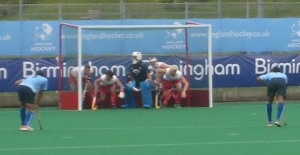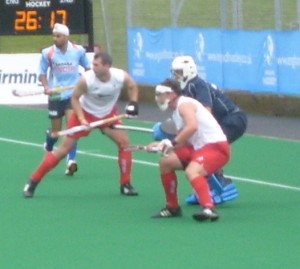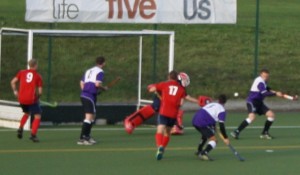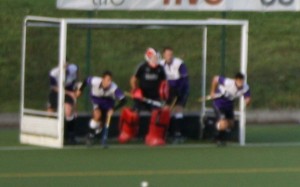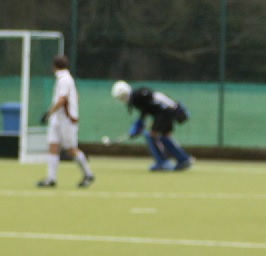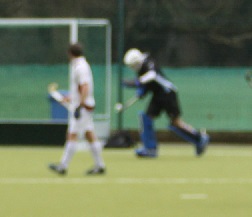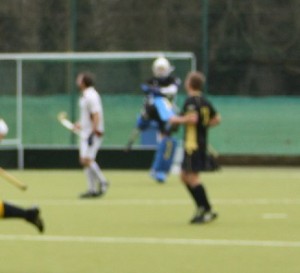‘Swagger’ is not exactly what you expect to think of when referring to hockey. But when it comes to goalkeeping (which is a part of the sport!), then you might be open minded in reconsidering! I’m not sure how it will translate internationally with the translate feature though! ‘Swag’, without sounding trite (I’m not exactly the definition of ‘street’ and it’s not exactly something you expect in the hockey community!) is a phrase often used when it comes to ice hockey, with goalies talking about how they look, and how they can experiment with pad colours and set-ups to look better and stylish! Who said goalkeepers didn’t have style?!
Well, in ice hockey, they can specialise their kit (we still can; Obo obviously offer the chance for two tone pads but not many do, although Monarch are introducing it!) and ‘dress up’ to ‘look the part’ and ‘cool’. I did play it for a bit (bit of a goalie connoisseur trying my hand at most sports, although do play outfield occasionally!!) and still pay attention to forums and blogs etc. for thoughts and ways of ‘thinking outside the box’; Justin Goldman s a great goalie writer and inspiration and whilst ice hockey is obviously a totally different technique and way of playing in goal, has a great level of insight for the mental game and psychological aspects of sport.
But regardless, it’s just a way in to contemplating body language and how you appear to your opposition. Easy to beat or hard to beat? You may not have played them yet and you don’t want to give them the wrong impression! I wanted to write about the conceptualisation of ‘swagger’ as a chance to discuss self belief, and thought this would be a good way in to introduce exploring the mode of self belief that has to be learnt through experience effectively and that potentially cannot be taught. You have to play like it and have the personality to match!
Why?
It’s a great way of looking at how confident you are on the pitch. You NEED to be confident, because it’s arguably the most pressured position on the pitch and if you’re not confident, you want play to your best or ‘do yourself proud’ with your performance. Self belief is either natural and deeply inherent for the person, or is buffed up by things that make you feel confident. You have to really trust in this positive self perception, or things can go belly up as you doubt your abilities and back away from tackles etc. or plays where you need to be aggressive with your play. Thinking about ‘swagger’ is just a vehicle for contemplating how your confidence comes across, a way of establishing this in the ‘mental game’ of the goalkeeping world.
Looking good
Look good, feel good, play good. It’s something that Obo discuss and makes a lot of sense and may be useful for you. But it also affects how your opponents see you. Look like you are unbeatable and they may feel you are going to be hard to beat! And conversely, look like you are a bad, and you may just well let in a few too many (bad days at the office aren’t fun!). Plus if you feel like a nervous wreck and things don’t go to plan, you may end up probably playing bad as doubt creeps in, so better to look hard to beat and not let things get to you! Psychologically you want to endorse this self belief so that you can play like it. Mind games and that malarkey may well also come into play as you get the opposition to believe you really are that unbeatable and going to stop them every time!
‘Swagger’ in the way you present yourself
‘Swagger’ as previously discussed, can easily be considered in the way your kit looks. That are lots of goalkeepers in the elite leagues that have pretty nice looking set-ups, even if the look is pretty standard (all red for TK right now etc. but Obo allows for the customisation for ‘swag’!). David Kettle (Welsh international) had a particularly swish blue and black colour look whilst at East Grinstead (the blue tk rhp helping complete the look!) and is now back with a more blue look (orange inners) at Surbiton after playing with a more mismatching look so far this season. Whilst Richard Potton at EG has a more orange look throughout, with blue on the inners of his pads. Aside from having kit that is shiny and well looked after, I’m not really sure how else you can look the part! Goalkeepers who will always look to experiment with kit, so even then, if they decide to use different types of kit for playing style and technical reasons, then it isn’t going to be a complete picture or universal set-up!
But ‘swagger’, like the way the ‘kids on the block’ talk about, is a lot about how you hold and present yourself. Fashion wise and also looking rough and tough. In a game if you look comfortable and seem like you’re going to stop every shot that comes at you, then your opposition is going to treat you so with more respect. But in goalkeeping, along with the loud verbal commanding of your defence, you want to cut a composed and yet imposing figure, an impression of cutthroat last man back to shut down their attacks.
One example is when I went along to see England in some international games a few years back. And watching from the stands and observing the goalkeepers in the game, was surprised to see Brothers look a little poserish (not a word and don’t mean to sound condescending, just how I saw things at the time!). It was a weekender against India. ‘Fairy’ (James Fair) played the first game and it was Nick Brothers’ turn ‘in between the posts’. The way he held himself and the air and presence about him as if he thought he was the best in the world (or something like that, I don’t know how to phrase it; I’ll never be that good and I do rate him highly as a ’keeper anyway!).
I thought it a little odd and different. But it makes a lot of sense now looking back in retrospect. If playing in front of a large crowd (probably not as big as the crowd at the England game, unfortunately!) and the added pressure, you can let the nerves get to you a little and affect your performance or you can overcome it by ignoring it and come across confident. Oriol Fabregas at RC Barcelona also comes across pretty emboldened. In this way, you’re doing the opposite of letting things and the opposition get to you; you’re showing that you are not nervous (even if you might be, by a tad!) and actually raring to go and stop everything that comes your way. ‘Gigi’ Buffon for Juventus and Italy and all time legend is a great footballing example of this; the way he stands high at corners and just carries himself looking confident the whole game. And he’s one of, if not often, the world’s best, so who can argue against that!
To extend and twist the metaphor, you can also consider how you express your confidence in the way you look (when not in your ready stance etc.). ‘Standing tall’ as a phrase (generally applied to life!) when applied to goalkeeping relates to bringing your ‘A game’ and giving your all no matter how good your team is (i.e. if you’re being shelled, you still do your best to stop every shot!), but can also in a sense relate to how you appear and how confident you are. Outside of goalkeeper, it’s been well researched that if you are hunched up, you feel worse mentally. Physiologically and psychologically impacting how you act. If you look hunched and crunching inwards, yousay a last corner of a game when the whistle has blown!
So in this sense, with body language, you are coming across to the opposition as not particularly confident in your own abilities. Personally, I just think I know too much random stuff, but I really do think it has a lot of impact for psychology and thus worth considering when thinking about the ‘mental game’ as a goalie in hockey. I’m not sure how this is understood in sports science, but theoretically makes a lot of sense. A straight back is needed in your ready stance anyway, but if you hold yourself upright as discussed in the following, you appear more content (you should be happy to be there, you’re in goal after all and you’re supposed to love it!) with the pressures and confident.
For example, look at the way Tom Millington (blue/orange tone Obo pads) looks and comes across in this clip; and when the play is not in his half, he still looks pretty composed and (versus shaky about a breakaway!):
robe demoiselle d’honneur? Peut-être vous devez penser à une rouge élégante et romantique. Notre boutique bellerobemariage.fr vous fournit des robes demoiselle d’honneur qui varient en termes de tissu, conception, longueur, etc. Une robe en mousseline à A-ligne décolletée en V longue au sol ou aux genoux sera votre choix idéal.

